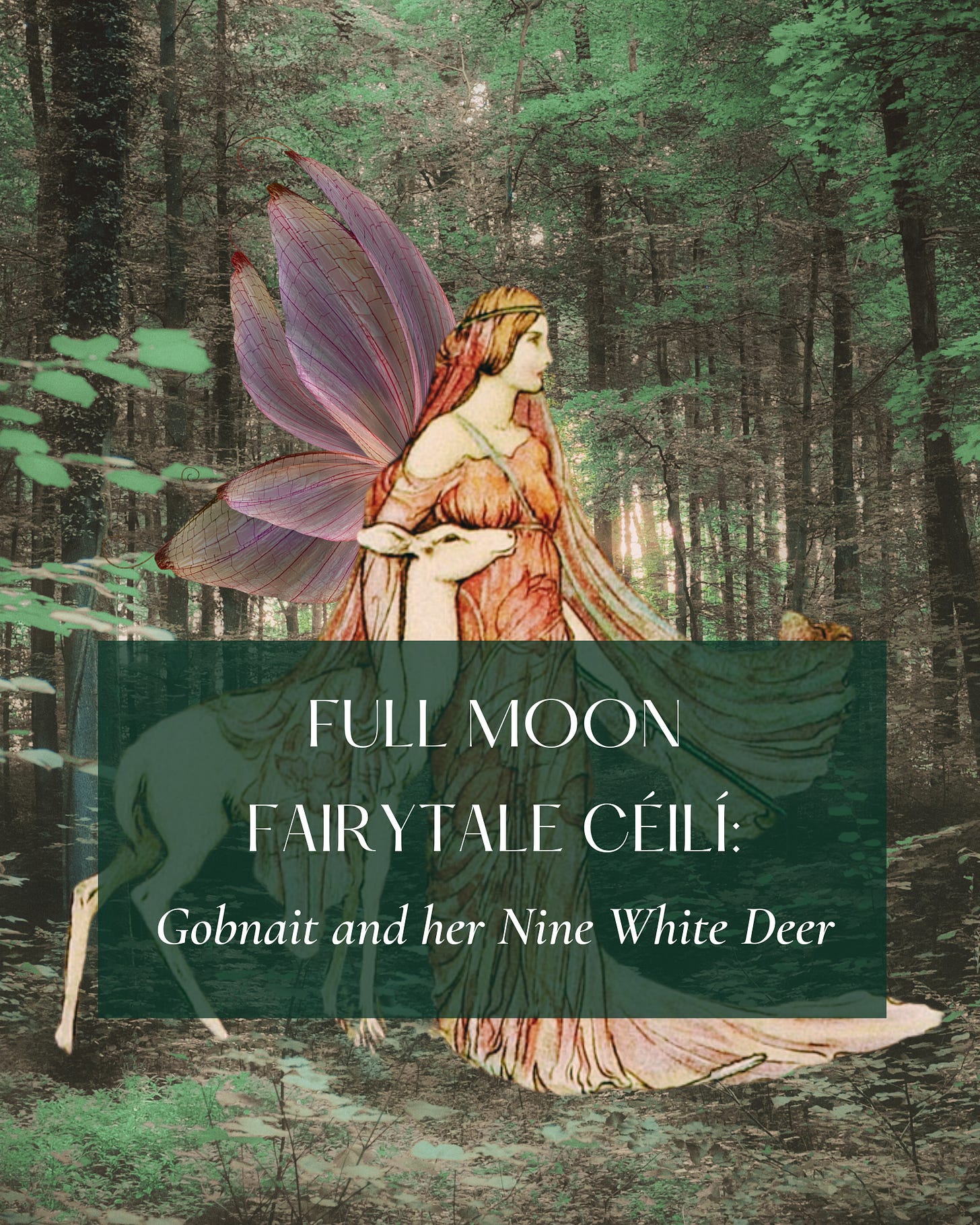A Chairde, Friends,
A gentle reminder that this Thursday, 13th February, we have our Full Moon Fairytale Céilí, our monthly folktale and sacred movement gathering with the theme of ‘Gobnait and her Nine White Deer.’
Tomorrow is St Gobnait’s Day who like Brigid, her mystic sister in ways, was a living saint on this island sometime in the 6th century. And again like Brigid and the later feminine force of Hildegard of Bingen, whom we can feel at this greening time of Imbolc, all three of these women were Abbesses, leaders of their own monastic settlements.
We have not been passed down a full hagiographical ‘life’ of Gobnait, but lore tells us that she was visited by an angel who urged her to search for the site where nine white deer grazed, for it was here that she would find her ‘place of resurrection’—the place where she would fulfil her dán, her creative destiny. Gobnait found these otherworldly white deer in Ballyvourney or Baile Bhuirne in Irish, ‘Town of the Beloved’ in Co. Cork where she is still worshipped today.
One of her rituals, Tomhas Ghobnatan, ‘Gobnait’s Measure’ is enacted here each year. A 13th-century oaken effigy of Gobnait is brought out for pilgrims to ‘measure’ with ribbons that become infused with Gobnait’s power and can be used in the household for healing all year round. Similar to the Brat Bhríde or ‘Brigid’s Cloak’ tradition.


Gobnait, again like Brigid, is thought to have pre-Christian roots. She too is a lady of smithcraft—over one hundred forges have been discovered on the site of her early medieval settlement. But perhaps what she is remembered most for is that she was a queen of bees. Gobnait could speak to bees, heal with their honey, and protect her tuath (‘tribe’) from invaders by commanding their swarms, as captured in Harry Clarke’s evocative stained glass window housed in University College Cork.
We see many wondrous associations with the feminine, the mother goddess and bees across the ancient world. At the Temple of Apollo at Delphi, the Pythia—the woman-seer who acted on behalf of the shining god Apollo, channelling his prophecies—was known as the ‘Delphic Bee’. In the Hymn to Hermes, Apollo speaks of the Thriae, three divine bee-nymphs who once resided at Delphi, uttering their prophecies:
‘For there are sisters three, called Thriae, maiden things,
Three are they and they joy in the glory of swift wings…
They taught me love of soothsaying, whilst I my flocks did feed…
And they flitted, now this way, now that, upon the wing,
And of all things that were to be they uttered soothsaying.’
- Hilda, M. Ransome, The Sacred Bee in Ancient Times and Folklore
This bee association makes Gobnait a magical ancestor to remember and to call upon for guidance during Imbolc season, to help us find our own ‘place of resurrection.’




